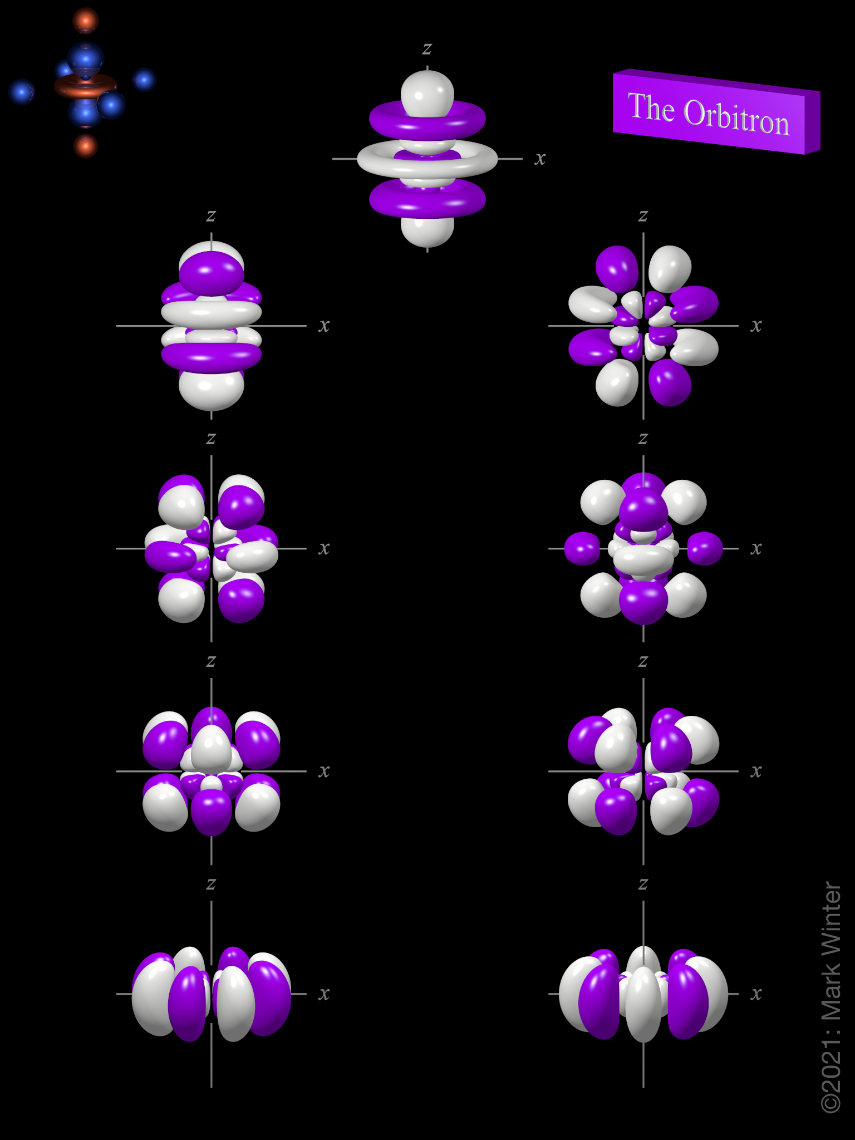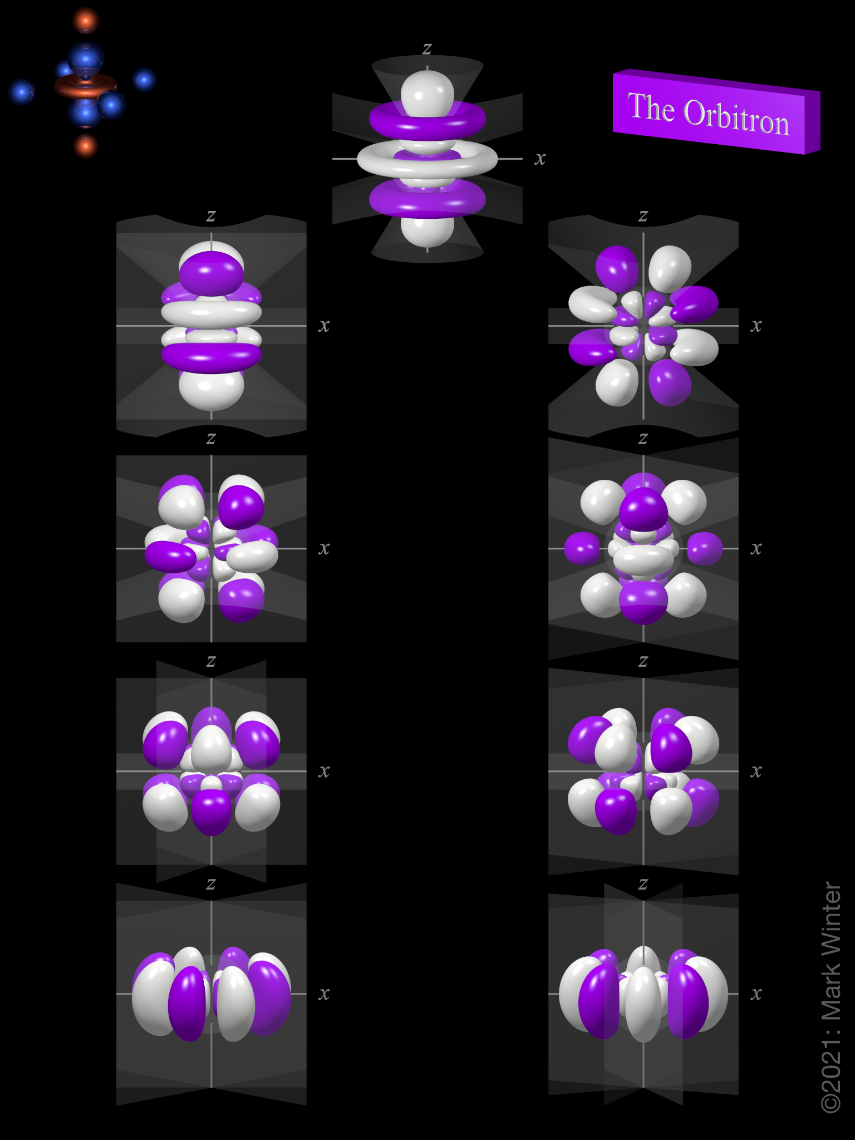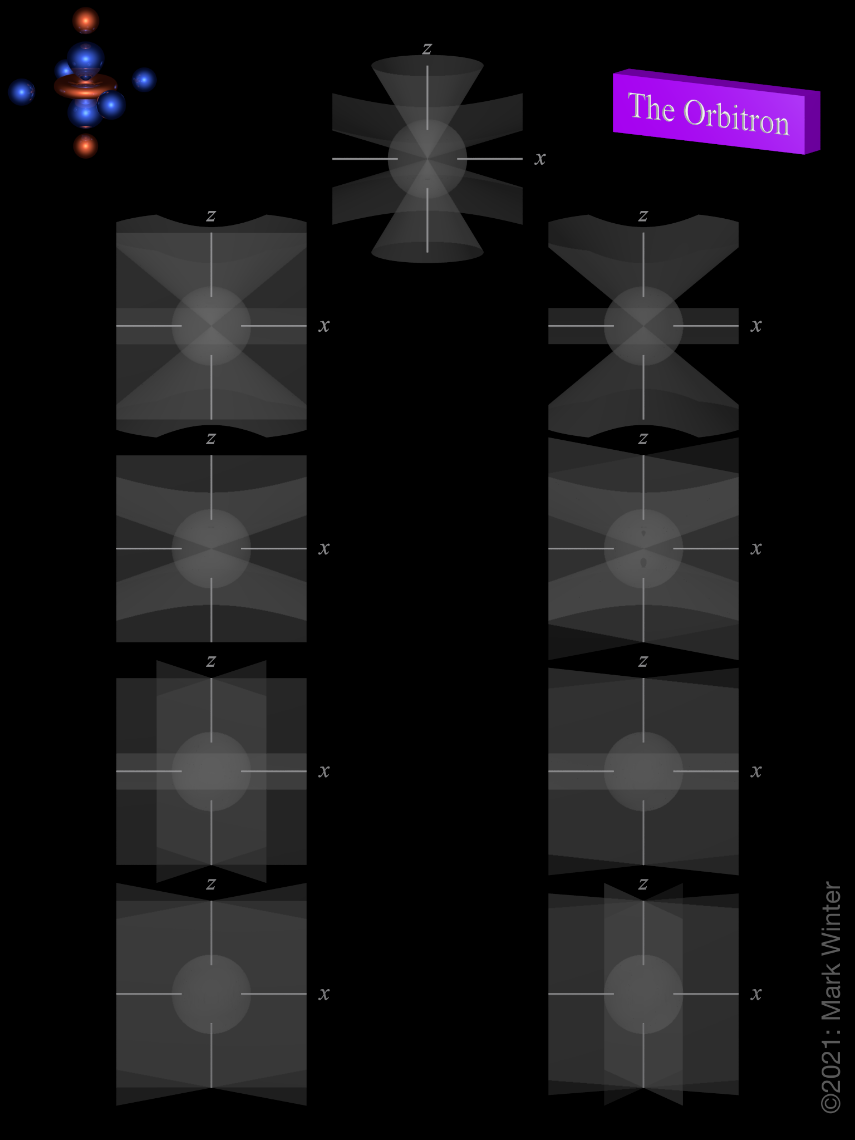6g atomic orbitals
For any atom, there are nine 6g orbitals. The higher g-orbitals (7g) are more complex since they have more spherical nodes while lower g-orbitals (6g) have none.
The shapes of the nine 6g orbitals. From left to right: (top row) 6gz4, (next to top row) 6gz3x and 6gz3y, (middle row) 6gz2xy and 6gz2(x2 - y2), (next to bottom row) 6gzx3 and 6gzy3, (bottom row) 6gxy(x2-y2) and 6gx4 + y4. For each, the purple zones are where the wave functions have positive values and the white zones denote negative values.
The 6gxy(x2-y2) and 6gx4 + y4 (bottom row in the image above) are related to each other by a 22.5° rotation about the z-axis.
The 6gzx3 [an abbreviation for 6gxz(x2 - 3y2)] and 6gzy3 [an abbreviation for 6gyz(3x2 - y2)] orbitals (next to bottom row in the image above) are related to each other by a 30° rotation about the z-axis.
The 6gz2xy [an abbreviation for 6gxy(6z2 - x2 - y2)] and 6gz2(x2 - y2) [an abbreviation for 6g(x2 - y2)(6z2 - x2 - y2)] orbitals (middle row in the image above) are related to each other by a 45° rotation about the z-axis.
The 6gz3x and 6gz3y (next to top row in the image above) are related to each other by a 90° rotation about the z-axis.
The OrbitronTM, a gallery of orbitals on the WWW: https://winter.group.shef.ac.uk/orbitron/
Copyright 2002-2023 Prof. Mark Winter [The University of Sheffield]. All rights reserved.


